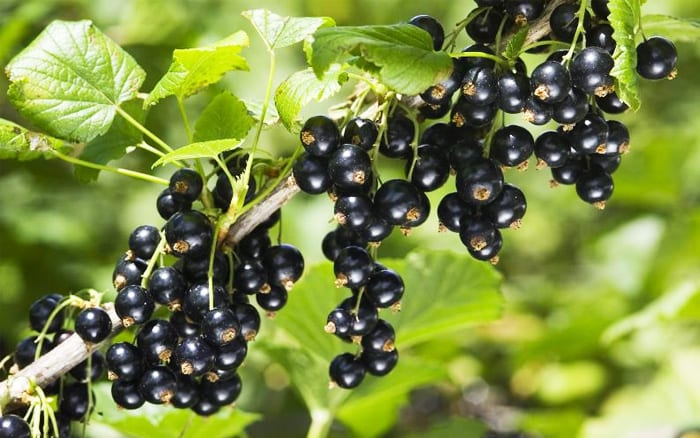December is a great time of the year to prune selected fruit bushes and trees. So, here are some tips on what to do to encourage great fruit production on next year’s crops.
Bear in mind that it’s not the time to prune stone producing fruit like cherries and plums because these must be pruned in summer to avoid silver leaf disease.
Blackcurrants
It’s not too late to prune established bushes. They fruit best on new stems produced the previous year, so there’s still time to remove one quarter to a third of the branches. Choose the oldest, unproductive, or weak branches, cutting the stems close to the base of the plant.
If growing a newly planted blackcurrant bush in a container, leave it to establish before pruning and then only prune lightly for the first three years in autumn, by removing weak growing stems.

If your blackcurrant bush has been growing in a pot for a year or more and is not growing strongly, then prune it hard between autumn and winter. Do this by cutting up to half of the existing stems down to just above soil level. Then, this should encourage strong, new growth in the spring.
Gooseberries & red/white currants

The good news is that pruning these three different types of fruit is exactly the same for each of them.
Young bushes up to 3 years old
Cut off about one half of the length of the main framework branches to encourage strong growth.
Older bushes
Cut off most of the stems’ new growth, leaving around 10cm of new growth. This helps the plant to produce really large berries the following year, so it’s well worth doing now.
Prune side shoots growing from the main framework branches to a length that leaves 3 buds, (or sets of leaves if pruning before leaf fall), counting them up the stem from where the side shoot meets the main stem.
Apples and pears
This month is a great time to prune young and established apple trees. In fact, some people ritually prune their trees on Christmas Day! However, leave your espaliers or cordon trees to be pruned in late summer.
Although pruning a young tree is different to an older one, the aim is the same. This is to build an open framework of strong branches that can take the weight of ripening fruit the following year.

One year old tree (known as a maiden)
This is ‘easy peasy’ as you simply cut off half of the branch.
Two-year-old tree
These generally have three or four branches. Cut strong, long branches back by half and any short or thin ones by two thirds. The shorter, thinner ones need more drastic pruning to encourage strong new growth.
Three-year-old (+) tree
Cut off a third of the current year’s growth from the main framework branches. You don’t need to do anything to the side branches growing off the main branches unless they’re crowding each other out. In this case, remove a few to allow good air flow around the remaining ones.
With all types of pruning, ensure you use sharp cutting tools to not only make your job easier but to avoid ripping the stem which could allow diseases to enter.

Leave A Comment